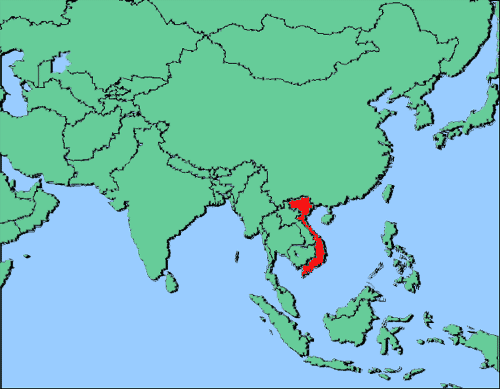
Circle the area on this map

D. Before Vietnam, Canada, Switzerland, Thailand and South Korea were granted permission to sell edible insects which can be raised on a fraction of the water, feed and space required by traditional livestock. The insect industry predicts that the number of Europeans consuming insect-based food will skyrocket, reaching a total of 390 million by 2030.
B. About 40 percent of Vietnam’s labor force is employed in agriculture, even though agriculture accounts for only 15 percent of the nation’s economy. In comparison, agriculture employs less than 1 percent of U.S. workers.
A. Vietnam is the world's largest producer of cashews and black pepper, producing about a third of the global supply of both. It also is the second largest exporter of coffee beans.
A. Cicadas, crickets, grasshoppers and scorpions are sold as food in Vietnam.